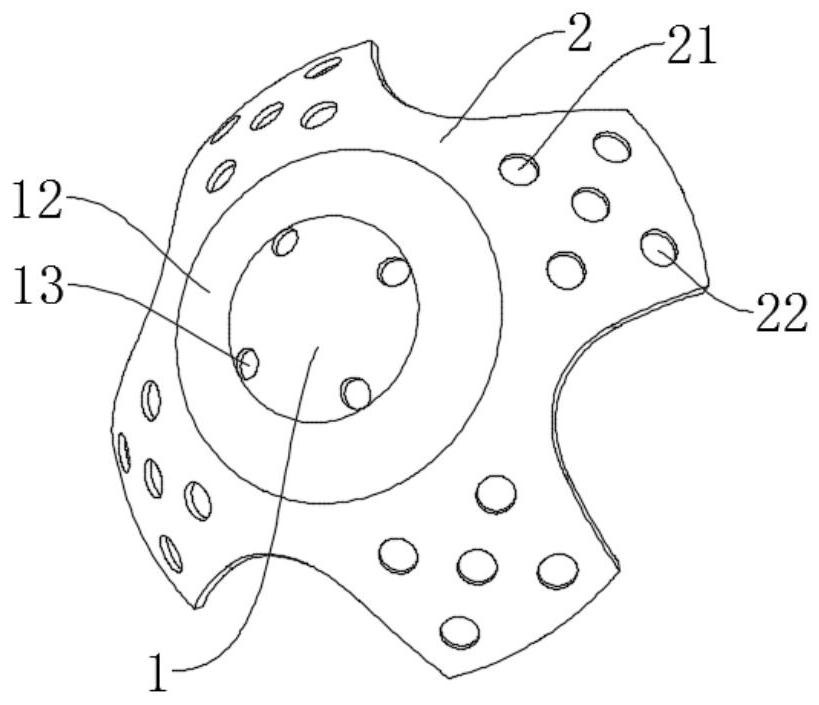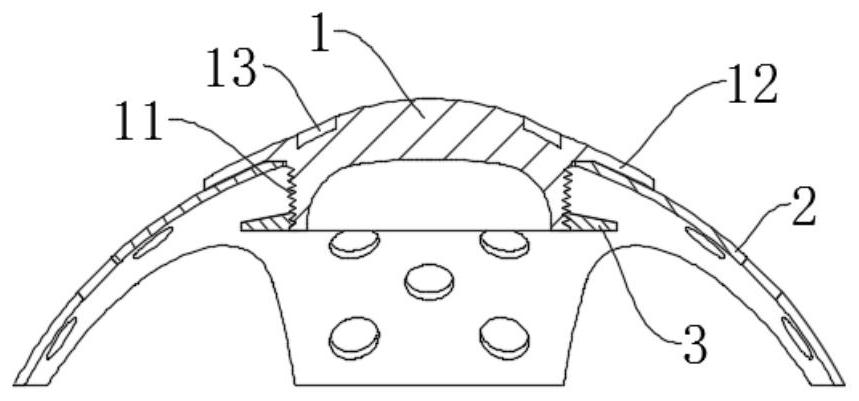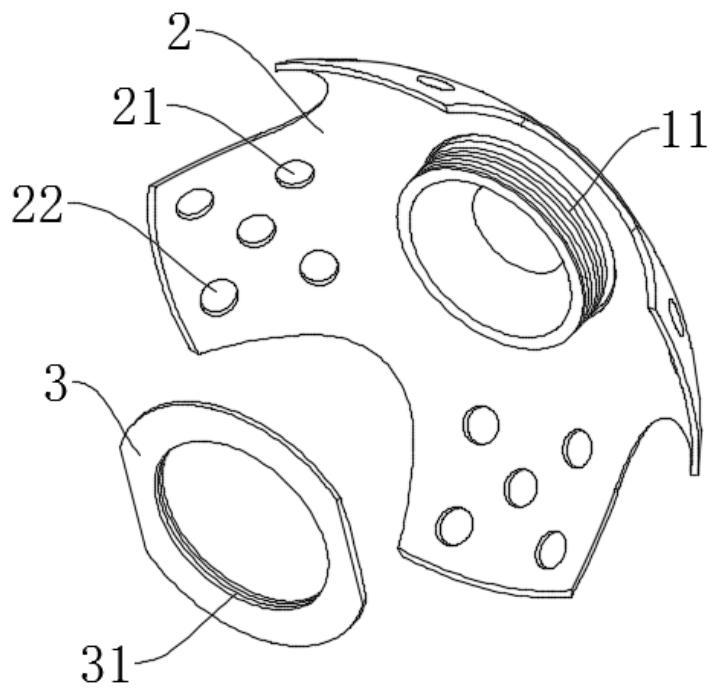Non-biological artificial cornea and installation method
An artificial cornea, non-biological technology, applied in the direction of eye implants, etc., can solve the problems of inability to set up, limited operating space, fixed foot human cornea adjustment, etc., to prevent the entry of bacteria and the loss of fluid, and reduce the risk of exposure , beneficial to the effect of surgical operation
- Summary
- Abstract
- Description
- Claims
- Application Information
AI Technical Summary
Problems solved by technology
Method used
Image
Examples
Embodiment 1
[0034] like figure 1 , 2 , 3, a non-biological artificial cornea includes: an optical mirror column 1 and an umbrella-shaped wing 2, the optical mirror column 1 is arranged in the opening in the center of the umbrella-shaped wing 2, and the artificial cornea also includes a movable setting The special-shaped fixing ring 3 on the optical mirror column 1 is provided with a thread 11 on the outer side wall of the optical mirror column 1, and a threaded hole 31 is arranged in the middle of the special-shaped fixing ring 3 to cooperate with the thread 11 of the optical mirror column 1, so The peripheral edge of the upper surface of the optical mirror column 1 is provided with an extension portion 12 extending to the upper surface of the umbrella-shaped wing 2 , and the extension portion 12 is attached to the upper surface of the umbrella-shaped wing 2 .
[0035] like image 3 , 4 As shown, the special-shaped fixing ring 3 has a pair of parallel sides 32, and the parallel sides 3...
Embodiment 2
[0043] like figure 2 As shown, this embodiment is basically the same as the above-mentioned embodiment, the difference is that the arc radius of the upper surface of the optical mirror column 1 is 6-8 mm, and the arc radius of the upper surface of the extension part 12 is 13-16 mm. Preferably, the arc radius of the upper surface of the optical mirror column 1 is 6.92 mm, and the arc radius of the upper surface of the extension portion 12 is 14.4 mm. The radian radius refers to the radius of the circle where the arc on the arc surface is located.
[0044] The normal human cornea is a concentric circle in the front and back, which plays the role of allowing light to enter the eyeball. The optical mirror column 1 and the extension portion 12 in this embodiment can form the effect of a convex lens through the setting of the above-mentioned arc radius, which can replace The lens plays the role of refracting light, so that the artificial cornea of the present invention can not o...
Embodiment 3
[0046] like figure 1 , 3 As shown, this embodiment is basically the same as the above-mentioned embodiment, the difference is that at least one reserved hole 21 is provided on the umbrella wing 2 at a distance of 2 to 4 mm from the edge of the extension portion 12, and the reserved hole 21 The diameter is 0.7 to 2 mm. Preferably, at least one reserved hole 21 is provided on the umbrella wing 2 at a distance of 3 mm from the edge of the extension portion 12. The diameter of the reserved hole 21 is 1 mm. The function is to reserve enough space for fundus surgery for patients who have undergone corneal transplantation, and to reserve a large enough access in advance to facilitate the entry of surgical instruments. organize.
PUM
| Property | Measurement | Unit |
|---|---|---|
| Diameter | aaaaa | aaaaa |
| Depth | aaaaa | aaaaa |
| Arc radius | aaaaa | aaaaa |
Abstract
Description
Claims
Application Information
 Login to View More
Login to View More - R&D Engineer
- R&D Manager
- IP Professional
- Industry Leading Data Capabilities
- Powerful AI technology
- Patent DNA Extraction
Browse by: Latest US Patents, China's latest patents, Technical Efficacy Thesaurus, Application Domain, Technology Topic, Popular Technical Reports.
© 2024 PatSnap. All rights reserved.Legal|Privacy policy|Modern Slavery Act Transparency Statement|Sitemap|About US| Contact US: help@patsnap.com










